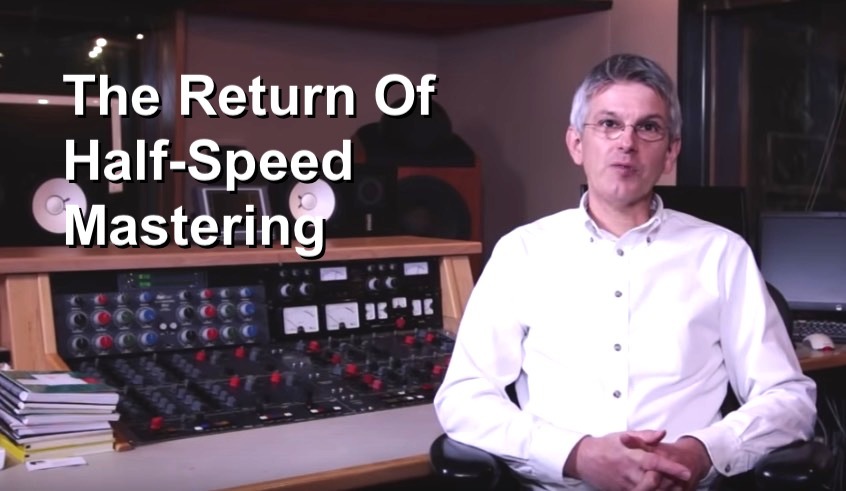- in Production by Bobby Owsinski
Half-Speed Mastering Makes A Return

Back in the vinyl days, the ultimate in quality came from a process known as half-speed mastering. This is where the playback speed of the tape and disk cutting lathe are slowed down by half to cut the lacquer master in order to improve the sound quality. This unusual process disappeared for quite a long time, but is being revived again at Abbey Road Studios.
The big question is, how does slowing everything down by half help the sound? When it comes to disk cutting, the high-frequencies are the most difficult to cut. They take up the most energy and require the most power for the cutter head. Slow everything down by half and now it’s a lot easier for the head to track the incoming highs while using less power. Think of it as increasing the headroom during disk cutting.
Many of the audiophile labels of the 70s and 80s like Mobile Fidelity regularly used half-speed mastering, and it was one of their big selling points at the time. The problem is that it takes twice the time to cut a record, requires modifications to the disk cutting signal path, and with the record business booming at the time, most record labels didn’t feel that the extra expense was worth it, especially after improvements to the normal speed lathes came along.
That’s why it’s somewhat of a surprise that Abbey Road is getting back into half-speed cutting. The market is limited to begin with, and unless you have a reasonably decent playback system, you probably won’t hear the difference.
That said, the following video featuring Abbey Road’s Miles Showell describes it very well. As he explains, just about any type of music can benefit from the process as long as it’s well recorded, but again, you have to balance the listening experience of the fan versus the costs of doing it.

